
If you’ve driven along any interstates or highways in Illinois, there’s a good chance you’ve seen tall plants with spiky flower heads. Teasels have become an increasingly common sight across Illinois. While they may appear attractive, especially for cut flower arrangements, these troublesome plants can form large colonies that outcompete and choke out native plants.
What does teasel look like?
There are two species of teasel commonly found in Illinois, cutleaf teasel (Dipsacus laciniatus) and common teasel (Dipsacus fullonum). Teasel grows as a basal rosette, and the leaves appear puckered with scalloped edges for at least a year. During this time, they will develop a large taproot, which can be over two feet long and an inch in diameter.
Once plants have acquired enough energy, they will produce large flower stalks that can be 7+ feet tall and prickly. The plants will also produce large prickly leaves along the stems. The stem leaves of common teasel appear similar to the rosette leaves but are smaller, opposite, and have spines on the underside of the midrib, while cutleaf teasel leaves are deeply lobed.

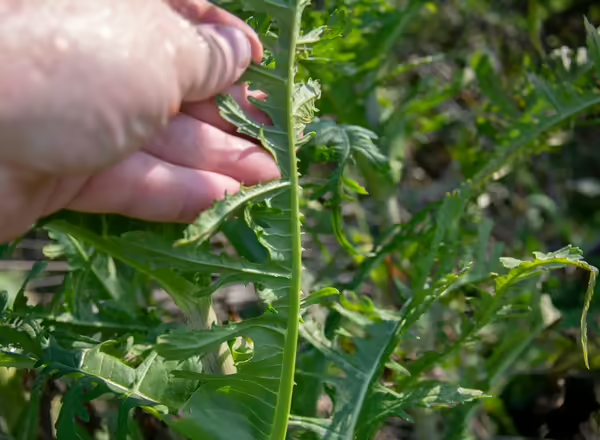
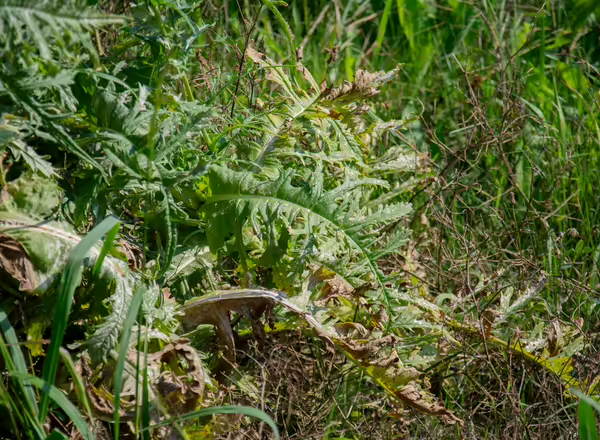
While they only flower once, each plant can produce multiple flower heads. Cutleaf teasel usually has white flowers and will bloom from July through September, while common teasel typically produces purple flowers and blooms from June to October. The flowers are small and clumped in dense, oval-shaped, spiky heads. A single plant is capable of producing thousands of seeds. After seeds are produced, the stems will turn brown and may remain standing throughout winter.
Teasel grows in open sunny areas and can tolerate both wet and dry conditions. While it can be found in well-established and high-quality habitats, it is most commonly seen in disturbed areas such as roadsides.
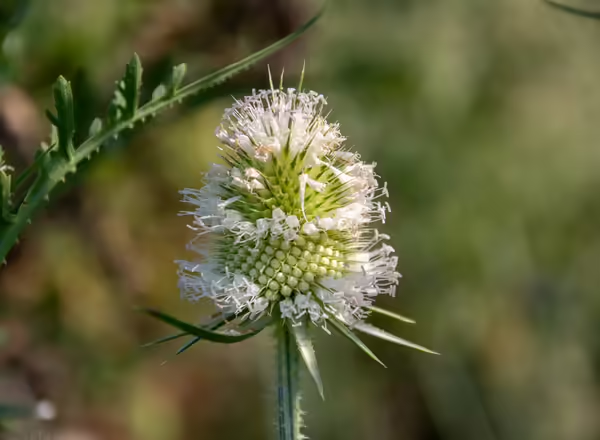
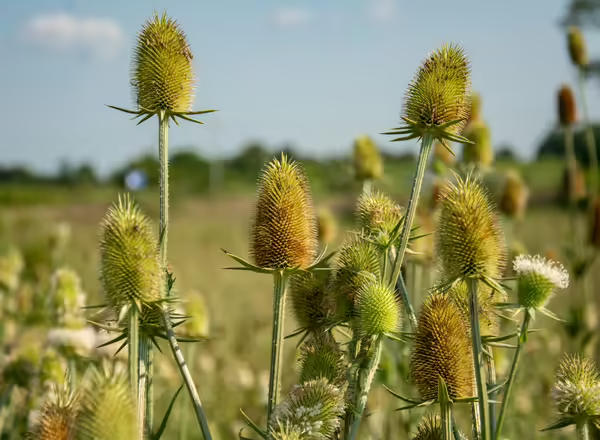
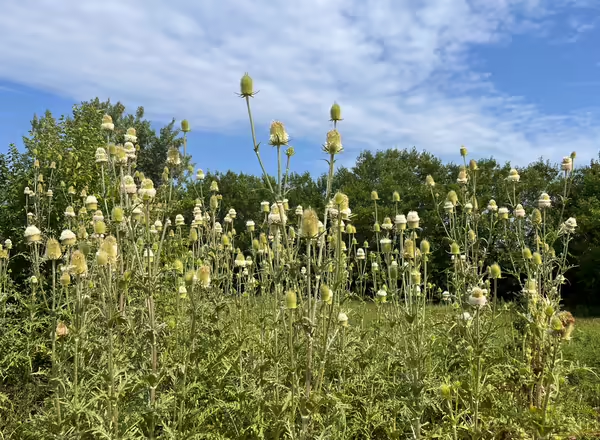
How did teasel get here?
Teasel is native to Europe, Asia, and North Africa. It was introduced to North America in the 1700s for use in the textile trade and as an ornamental. For hundreds of years, the seed heads have been used to raise the nap of cloth (teasing). The teasing process brings loose fibers to the surface and makes the cloth feel softer.
Dried seedheads are also used in flower arrangements and could be one reason it is often found in and around cemeteries. They are also widely used in craft projects. It is important to note that teasel is listed as an invasive plant in Illinois through the Illinois Exotic Weed Act, meaning it cannot be bought, sold, or distributed in Illinois.
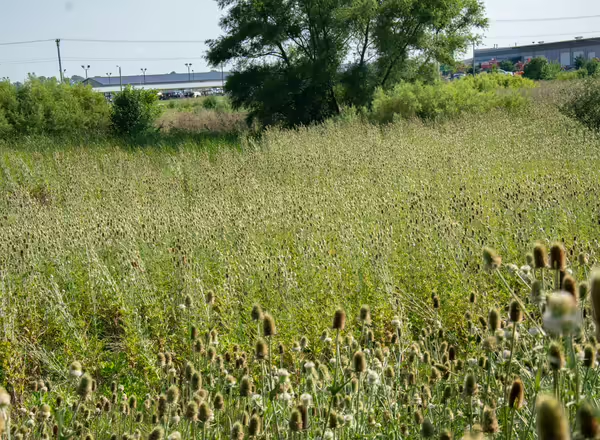
The problem(s) with teasel
Teasels are aggressive plants, with cutleaf being more aggressive than common, that can rapidly spread and outcompete native plant species. The thousands of seeds each plant is capable of producing can remain viable for at least two years. This can lead to dense patches of plants that make it difficult for other species to survive.
While seeds typically don’t disperse very far, with 98% of seeds remaining within 14.5 feet of the parent plant, seeds along highways can be spread by passing vehicles or mowing equipment. Seeds can also be spread by birds and water (ditches, streams/rivers, etc.).
In addition to their prolific seed production, teasels have no natural enemies in Illinois. Very little eats them, allowing them to quickly spread once they are established in an area.

Managing teasel
There are several different ways teasel can be managed.
Mechanical management
- The rosette stage can be dug from the ground. Smaller rosettes are easier to remove, because large rosettes will have developed a large tap root. If you dig plants, remove as much of the tap root as possible.
- Once plants begin to flower, the flower heads can be cut and bagged, and the roots can be chopped 1 to 2 inches below the soil surface. Make sure to remove and dispose of the flower heads; seeds will continue to develop even after the flower heads have been cut off.
- Unfortunately, mowing teasel is not an effective way to manage it, plants will still produce flowers, even after repeated mowing.
Teasel can also be managed by using herbicides. Herbicides containing glyphosate or triclopyr can be applied to plants in the rosette stage in the spring or early summer. Once the plants begin to produce flower stalks (bolt), herbicides become less effective. If you use herbicides, make sure to read and follow all label directions.
For more information on managing teasel, check out Management of Invasive Plants and Pests of Illinois.
Good Growing Fact of the Week: The size of the rosette is a better indication of when a teasel plant will flower than the age. Teasel rosettes usually do not produce a flowering stem until they are at least 12 inches in diameter.
Resources and for more information
Illinois Nature Preserves Commission: Vegetation Management Guideline Cut-leaved teasel & Common teasel
University of Illinois Extension: Invasive Teasels
Photos by Ken Johnson, University of Illinois Extension
Want to get notified when new Good Growing posts are available? SIGN ME UP!
Give us feedback! How helpful was this information (click one): Very helpful | Somewhat helpful | Not very helpful
MEET THE AUTHOR
Ken Johnson is a Horticulture Educator with University of Illinois Extension, serving Calhoun, Cass, Greene, Morgan, and Scott counties since 2013. Ken provides horticulture programming with an emphasis on fruit and vegetable production, pest management, and beneficial insects. Through his programming, he aims to increase backyard food production and foster a greater appreciation of insects